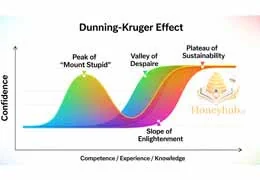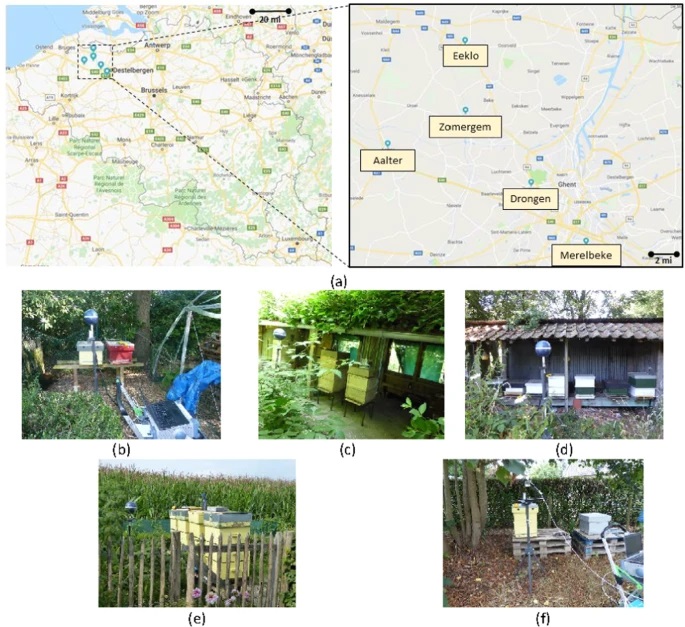پنیر موزارلای شما کش نمیآید یا میسوزد؟ راز آن در علم نهفته است. از فرآیند پاستا فیلاتا تا نقش «کهنگی» و قندها در...
جستجو در بلاگ
دستهبندی بلاگ
آخرین ارسالها

سالاد هویج فرانسوی | دستور پخت اصلی و نکات حرفهای برای بهترین سالاد 2025-09-17 مطالعه بیشتر
ارسال شده در: سبک زندگی
253 بازدید
سالاد هویج فرانسوی (Carottes Râpées) یک پیش غذای سالم و خوشمزه است که در کمتر از ۱۵ دقیقه آماده میشود. این سالاد...

انسان و فصلها: تأثیر تغییر فصول بر سلامت، روان و سبک زندگی طبیعی مطالعه بیشتر
374 بازدید
آیا میدانستید تغییر فصلها بر سلامت، خلقوخو و ژنهای شما تأثیر میگذارد؟ کشف کنید که چگونه با طبیعت هماهنگ شوید و...

اثر دانینگ-کروگر: وقتی اعتماد به نفس، نقاب ناآگاهی میشود 2025-08-29 مطالعه بیشتر
ارسال شده در: سبک زندگی
249 بازدید
اثر دانینگ-کروگر چیست و چگونه بر زندگی ما تأثیر میگذارد؟ در این پست جذاب، با چرخه معیوب جهل و اعتماد به نفس آشنا...

عسل آفتابگردان: خواص، فواید و راهنمای کامل از یک متخصص 2025-08-18 مطالعه بیشتر
ارسال شده در: انواع عسل
316 بازدید
در این مقاله جامع، با عسل آفتابگردان، خواص درمانی و بیوشیمیایی آن، تاریخچه، و روش تشخیص عسل خالص آشنا شوید.
پستهای محبوب

فواید شگفت انگیز عسل برای کاهش خطر دیابت
2022-04-10
14211 بازدید
بررسی جامع و علمی نقش عسل در مدیریت دیابت. از تأثیر بر مسیرهای سلولی و شواهد بالینی گرفته تا راهنمای دقیق انتخاب، دوز...
مطالعه بیشتر
ارائه محصولات سالم و اطلاعات علمی شفاف 2022-03-30
ارسال شده در: اخبار و اطلاعیهها
9311 بازدید
هانیهاب با شعار صداقت، شفافیت، مشتریمداری و مسئولیتپذیری، پرتلاش همچون زنبور عسل به اذن الهی، محصولات سالم و طبیعی...
مطالعه بیشتر
آنزیمهای شگفت انگیز عسل خام | چرا آنزیمهای عسل مهمند؟
2022-04-11
7875 بازدید
عسل خام ترکیبی کم نظیر از مواد مغذی است که شامل آنزیمهای شگفت انگیز متعددی است که نقش مهمی در بهبود کیفیت و شفابخشی...
مطالعه بیشتر
همه چیزی که باید درباره عسل بدانید
7586 بازدید
عسل یک ماده غذایی طبیعی و سالم است که دارای خواص و فواید درمانی بسیاری است. در این پست، به شما درباره عسل، انواع آن،...
مطالعه بیشتر
ژل رویال چیست؟ راهنمای کامل فواید، عوارض و نحوه مصرف
2022-04-15
7441 بازدید
کشف کنید که ژل رویال چگونه ملکه را خلق میکند و چه پتانسیل شگفتانگیزی برای سلامتی، جوانی و تقویت ایمنی انسان دارد....
مطالعه بیشترپستهای ویژه

راز کش آمدن پنیر موزارلا: راهنمای علمی برای یک پیتزای عالی 2025-10-25
ارسال شده در: گوناگون
194 بازدید
پنیر موزارلای شما کش نمیآید یا میسوزد؟ راز آن در علم نهفته است. از فرآیند پاستا فیلاتا تا نقش «کهنگی» و قندها در...
مطالعه بیشتر
سالاد هویج فرانسوی | دستور پخت اصلی و نکات حرفهای برای بهترین سالاد 2025-09-17
ارسال شده در: سبک زندگی
253 بازدید
سالاد هویج فرانسوی (Carottes Râpées) یک پیش غذای سالم و خوشمزه است که در کمتر از ۱۵ دقیقه آماده میشود. این سالاد...
مطالعه بیشتر
انسان و فصلها: تأثیر تغییر فصول بر سلامت، روان و سبک زندگی طبیعی
374 بازدید
آیا میدانستید تغییر فصلها بر سلامت، خلقوخو و ژنهای شما تأثیر میگذارد؟ کشف کنید که چگونه با طبیعت هماهنگ شوید و...
مطالعه بیشتر
اثر دانینگ-کروگر: وقتی اعتماد به نفس، نقاب ناآگاهی میشود 2025-08-29
ارسال شده در: سبک زندگی
249 بازدید
اثر دانینگ-کروگر چیست و چگونه بر زندگی ما تأثیر میگذارد؟ در این پست جذاب، با چرخه معیوب جهل و اعتماد به نفس آشنا...
مطالعه بیشتر
عسل آفتابگردان: خواص، فواید و راهنمای کامل از یک متخصص 2025-08-18
ارسال شده در: انواع عسل
316 بازدید
در این مقاله جامع، با عسل آفتابگردان، خواص درمانی و بیوشیمیایی آن، تاریخچه، و روش تشخیص عسل خالص آشنا شوید.
مطالعه بیشتر




Leave a comment